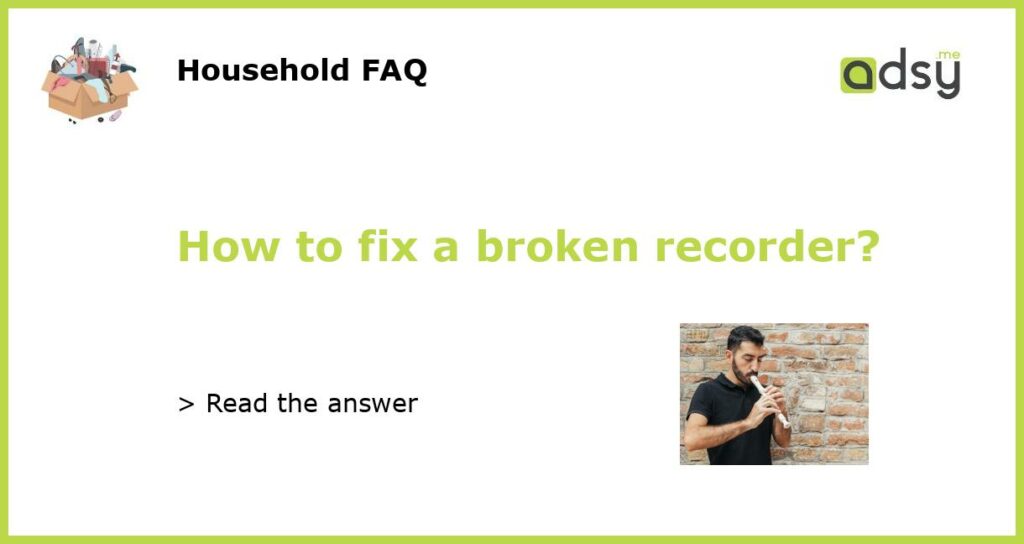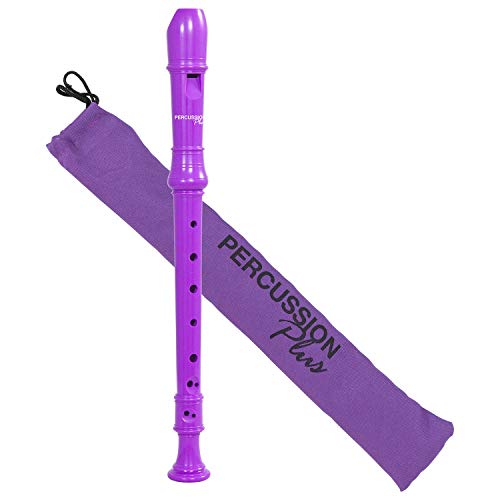Common Issues with a Broken Recorder
If you’re experiencing issues with your recorder, don’t worry – you’re not alone. Recorders can become broken or malfunction for a variety of reasons. Some common issues include a broken or stuck key, a clogged mouthpiece, or internal damage to the instrument. But fear not, as there are solutions available to fix these problems and get your recorder back in working order.
Steps to Fix a Broken Recorder
1. Identify the problem: Before attempting to fix your broken recorder, you’ll need to identify the specific issue. Is a key not working? Is the sound muffled or distorted? Take a close look at the instrument to determine what needs to be addressed.
2. Clean the recorder: In many cases, a malfunctioning recorder may just need a good cleaning. Take apart the instrument and gently remove any debris or dirt inside. You can use a soft cloth or a pipe cleaner to carefully clean the keyholes and the mouthpiece. Avoid using water or any harsh chemicals, as this can damage the recorder.
3. Fix stuck keys: If a key is stuck or not working properly, you can try gently tapping it to free it up. Avoid using excessive force, as this can cause further damage. If tapping doesn’t work, you may need to disassemble the recorder to access the mechanism and fix the issue.
4. Repair or replace broken parts: If your recorder has internal damage or a broken key that cannot be fixed easily, you may need to seek professional help. Look for a reputable instrument repair shop or a music store that offers repair services for recorders. They will be able to assess the damage and provide you with options for repair or replacement.
Alternatives to Fixing a Broken Recorder
If your recorder is beyond repair or the cost of fixing it is prohibitive, you may need to consider an alternative solution. Here are a few options to consider:
1. Buy a new recorder: If your broken recorder is an inexpensive model, it may be more cost-effective to simply replace it with a new one. There are many affordable options available, ranging from beginner to professional grade.
2. Borrow or rent: If you only need a recorder for a short period of time or for a specific project, consider borrowing one from a friend or renting from a music store. This can be a budget-friendly option while you decide on a permanent solution.
3. Explore other instruments: If you enjoy playing the recorder but can’t find a suitable replacement, consider trying out other woodwind instruments. The flute, clarinet, or saxophone are all similar to the recorder and can offer a similar playing experience.
Preventive Measures to Avoid Future Breakage
To avoid future breakage or malfunctions with your recorder, it’s important to take proper care of the instrument. Here are a few preventive measures you can take:
1. Store it properly: When you’re not playing the recorder, make sure to store it in a protective case. This will help prevent accidental damage and keep it clean and safe.
2. Clean regularly: Regularly clean your recorder to prevent the buildup of dirt and debris. Disassemble the instrument and use a soft cloth or pipe cleaner to remove any dirt from the keyholes and mouthpiece.
3. Handle with care: When playing the recorder, be mindful of how you handle it. Avoid gripping too tightly or using excessive force on the keys, as this can lead to breakage.
4. Avoid extreme temperatures: Keep your recorder away from extreme heat or cold, as this can cause damage to the materials and affect the instrument’s performance.
Conclusion
A broken recorder can be frustrating, but with the right knowledge and steps, you can fix the issue and get back to playing your favorite tunes. From identifying the problem to cleaning and repairing, there are various solutions available. If all else fails, there are alternatives such as purchasing a new instrument or exploring other woodwind options. Remember to take preventive measures to avoid future breakage. With care and proper maintenance, you can enjoy your recorder for years to come.






